Hamburg Travel Guide
Hamburg is Germany's second largest city, Europe's third-busiest port and an increasingly popular destination for tourists. Situated on the banks of the Elbe River, Hamburg has drawn casual comparisons as the Venice of Germany, a reputation enhanced by a network of canals and two large lakes near the city centre. The city was strategically important as a port and is still imbued with a strong maritime tradition. Hamburg is also a delight for music buffs, being the birthplace of famous 19th century composers Brahms and Mendelssohn, and the city where the Beatles built their reputation in their formative years.
Hamburg is today a distinctive mix of old brick buildings, modern glass facades and baroque churches. Nowhere is this more evident than the astonishing new Elbphilharmonie concert hall, its glass edifice perched atop an old brick warehouse. Visitors can take a free trip to the viewing deck of the building for views out over the harbour and Speicherstadt, the largest warehouse district in the world. Every Sunday morning since 1703, trade has sprung up at Hamburg's traditional fish market along the harbour, where tourists can sample the sights, sounds and tastes of local produce.
The main street running through the party district of St Pauli is called Grosse Freiheit (Great Freedom), and this is exactly what awaits the intrepid explorer. The city also hosts numerous music festivals throughout the year, spanning rock to jazz. For those whose tastes are more culturally refined, Hamburg has a number of museums dedicated to history, art, communications, ethnology and even spices. Lastly, Hamburg is the gateway to the seaside and spa resorts of the Baltic and North Sea coastline.
Things to do in Hamburg
Hamburg is a diverse and entertaining city with plenty to see and do, ranging from world-class museums, wonderful art galleries and an upbeat nightlife to excellent restaurants and first-class shopping. Also popular with tourists is the notorious Reeperbahn red-light district.
Many of the things to see and do in Hamburg revolve around its famous harbour. Every Sunday morning, the banks of the Elbe River are swamped with tourists at the Hamburg Fish Market, soaking up the lively atmosphere and bartering for the freshest produce. Speicherstadt, Hamburg's warehouse complex, is the largest in the world built on wooden foundations and is now a UNESCO World Heritage site. Visitors can admire the Gothic Revival architecture and visit Miniature Wonderland, the world's largest model train system.
There are many beautiful gardens and parks in the city too. Perhaps the best of these is Planten un Blomen. Visitors looking for a break from museums and activities can stroll through the tropical greenhouse and Japanese garden, or catch a concert on the lawns in the summer months. Travellers can delve into Hamburg's past at the Museum of Hamburg History, or enjoy the extensive collection and themed exhibitions of the Hamburg Kunsthalle.
Hamburg is also conveniently located for excursions to nearby attractions. Some of the best day-trip destinations are the quaint towns of Blankenese, Lubeck and Hameln, all of which offer great sightseeing opportunities. The island of Sylt, Germany's most northern point, is also extremely popular and a great spot for coastal weekend getaways.
A Hamburg holiday offers something for everyone, from children who will revel in attractions such as the world's largest model railway to raucous groups of young travellers heading for the risque streets of the Reeperbahn.
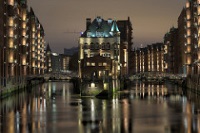
Hamburg Warehouse Complex
The world's oldest warehouse complex, built of red brick with Gothic gables and turrets, is a century old and still in use for storing exotic goods from around the world, such as tea, cocoa, silk and oriental carpets. Known as the Speicherstadt in German, this historic section of the Free Port between the Deichtorhallen and Baumwall has been turned into a tourist attraction by the addition of an open air theatre, a spice museum, and an old Russian submarine open for exploration, as well as a few other little museums and some regular art exhibitions. Another popular attraction in Speicherstadt is the 'Hamburg Dungeon', an interactive museum showcasing the more unpleasant and gory aspects of the city's history.
Just wandering through the narrow cobblestone streets and exploring the small waterways lined by old warehouses is fun, and taking a boat out into the harbour is also a treat. The Speicherstadt is illuminated at night by light shows that create an enchanting spectacle, particularly viewed from a boat on a harbour night tour. The harbour has played a huge role in Hamburg's identity and history and exploring this area is insightful.
Hamburger Kunsthalle
Hamburg's premier art gallery offers the chance to view works from the Middle Ages through to the present day. The Kunsthalle's mission is to educate the public rather than showcase particular art treasures, with exhibitions constantly changing to introduce new art forms. The museum now actually occupies two buildings: the Galerie der Gegenwart, a modern structure exhibiting contemporary art, while the famous old building showcases the older works, most dating back to the 14th, 16th and 17th centuries.
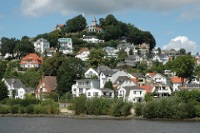
Blankenese
The quaint and affluent town of Blankenese sits upon the banks of the Elbe River, and is adored for its pre-war villas, gorgeous hotels and stunning views. Visitors can explore narrow alleys between picturesque houses, enjoying an abundance of cafes and restaurants from where patrons can gaze down at the ships cruising in and out of the harbour. Pedestrian streets and nearly 5,000 stairs crisscross the charming hillside, while there is also a Roman garden, two lighthouses and more than half a dozen peaceful parks and walking trails.
The Hamburg Museum
The Hamburg Museum gives a detailed description of the city of Hamburg from the 8th through to the 20th centuries. Scale models have been used to illustrate the changing shape of the city's famous harbour. Exhibits include reconstructions of various typical rooms, such as the hall of a 17th-century merchant's home to an air raid shelter from World War II. Actual features from old buildings have been moved into the museum creating an exciting architectural space. The museum is crowned by a tower designed to look like a lighthouse and dating back to 1922 when the museum opened. The gorgeous central courtyard is covered with a glass ceiling and the space is now used for exhibitions and concerts.

Sylt
The island of Sylt boasts some lovely sandy beaches and stunning views, and its main town, Westerland, has become a popular seaside resort. In recent years, it has become the seaside destination of choice for the rich and famous of Germany, with celebrities regularly spotted on its shores.
Sylt offers plenty of entertainment for tourists, including shops, spas and exclusive restaurants, with miles of bicycle paths in pine forests, horse riding trails and golf courses. The Ellenbogen Nature Reserve is lovely for walks, with two lighthouses set against wonderful dunes.
Although most visitors come to enjoy the beaches and outdoor activities, other popular attractions include the Sylt Aquarium, and the small but historically interesting Lutheran Church of St Severin. Sylt is easy to get to and trains arrive several times a day from Hamburg, with the island connected to the mainland by the six-mile (10km) Hindenburgdamm Bridge.
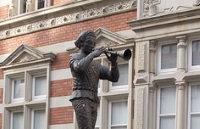
Hameln
Hameln is the setting of the Pied Piper fairytale, and its old town centre is filled with reconstructed Renaissance buildings and wood-frame houses that bring the legend to life. Set beside the River Wester amid beautiful mountain scenery, it's a popular tourist destination in northern Germany. Most of the tourist attractions in Hameln are close together, so it's easy to see everything on foot before enjoying a meal at one of the town's many cafes and beer gardens. Hameln also hosts a popular Christmas market from late November through December that is a great place to do some shopping for those back home.
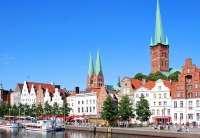
Lübeck
Not only was Lübeck home to Nobel Prize winners Willy Brandt and Thomas Mann, it's also a living monument to the wealthy Hanseatic merchants of the 13th century. A UNESCO World Heritage Site, Lübeck's architecture consists of steeples, spires and high-gabled houses, strong towers, massive gates and a lovely Old Town. The town is also popular for its marzipan, with locals adamant that their hometown is where the delightful confection was first devised. Samples are freely available in Lübeck, along with the tastes of the region's fine wines. There are also some great cafes and restaurants to enjoy in this beautiful town, which feels quite unlike any other.
Planten un Blomen
In the middle of Hamburg is an oasis of green lawns and trees, with colourful flowers and fountains providing a lovely backdrop to relax in. Visitors stroll around the Japanese garden and enjoy the tropical flower collections and teahouse, while children will enjoy its playgrounds, pony rides, miniature golf and ice skating rink. In summer, there are evening concerts and plays, with wonderful light shows at the fountains, but the park is beautiful in autumn and spring too, when the colours are spectacular. Right in the heart of Hamburg, it's easy to access and ideal for blowing off some steam and taking a break from the traditional sightseeing.
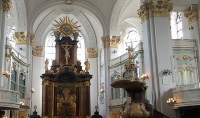
St Michaelis Church
St Michaelis began as a humble church in 1647, eventually expanding to become the grand building which today is one of Hamburg's most recognisable landmarks. Visitors can take tours of the 270 foot (82m) tower; the crypt, which contains the bodies of Johann Mattheson and Carl Philipp Emanuel Bach; and view an interesting presentation on the history of Hamburg. The tower has a magnificent viewing platform, reached either by elevator or by climbing the 452 steps that rise past the bells and the famous clock machinery.
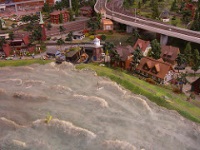
Miniatur Wunderland
Train enthusiasts will love Miniatur Wunderland in Hamburg but so will almost everybody else. With more than 4,000 square metres of floor space, there is much to admire in the tiny models, which are based on various regions, both local and international. The largest of its kind in the world and the most visited permanent exhibit in Northern Germany, there are 900 trains with 12,000 carriages, as well as 300,000 lights, 200,000 trees and 200,000 human figures. Sections include Southern Germany and the Austrian Alps, Hamburg, the Coast, America, Scandinavia and Switzerland.
Getting Around
Hamburg's extensive public transport system consists of the U-Bahn (subway), the S-Bahn (suburban train), buses and harbour ferries, and makes getting around without a car pleasant and easy. The U-Bahn is excellent and serves the whole city centre. It connects with the S-Bahn that services the suburbs, and this train network is the fastest way to get around the city. Buses are also convenient and night buses operate in the downtown area.
Taxis are generally less expensive than in other German cities and are available at all hours, as are ride-sharing apps. It's possible to hire a car but parking in some areas of the city is extremely difficult to find and makes driving stressful. As in most German cities, it's possible to hire bicycles at very little cost in Hamburg. The city is generally considered safe, with many parts of it best explored on foot. But it's worth taking good care of possessions when walking and using public transport.
Hamburg Climate and Weather
Hamburg has an oceanic climate. It is a fairly wet and windy city, with prevailing westerly winds blowing in moist air from the North Sea. Summers are warm but rainy, with occasional dry, sunny spells. Winters are cold, sometimes chilling to 28F (-2C) in January, the coldest month, when the Elbe and lakes in the city centre have been known to freeze enough for ice-skating. Snowfall is usually light and Hamburg generally only experiences one or two heavy snowfalls a year, starting in early December, with icy sleet being the more common form of winter precipitation. Spring is very pleasant in Hamburg, when the city's thousands of trees come into bloom with a new cloak of green and the days start to warm up. In fact, despite summer being the most popular period for tourism, spring is the best time to visit Hamburg, not least of all because it is the season that shows off the city's numerous parks and gardens to their best advantage. Summer can be delightful, and there are many events to be enjoyed in the hottest months, but attractions can also get very crowded and everything is more expensive.
Germany travel info
Electricity
230 volts, 50Hz. European-style two-pin plugs are standard.
Language
German is the official language. English is also widely spoken and understood.
Money
The unit of currency is the Euro (EUR), divided into 100 cents. ATMs and exchange bureaux are widely available. The major credit cards are widely accepted in large shops, hotels and restaurants. The quickest and most convenient way to change money is to obtain cash from one of the ATMs that are ubiquitous features on all German streets. Banks are closed on weekends, but exchange bureaux at airports and main railway stations are open daily.
Tipping
German law stipulates that all prices, menus and bills include both tax and a service charge, so tipping is not necessary in restaurants. Cleaning staff, hairdressers, taxi drivers and other menial services appreciate small tips.
Health
There are no serious health risks for visitors to Germany and no vaccinations are required. The German health service is excellent and there is a reciprocal health agreement with most EU countries, whose citizens are entitled to free medical and dental treatment on presentation of a European Health Insurance Card (EHIC). After Brexit, the Global Health Insurance Card (GHIC) replaced the European Health Insurance Card (EHIC) for UK citizens. The GHIC allows UK citizens access to state healthcare during visits to the EU. The GHIC is not valid in Norway, Iceland, Liechtenstein or Switzerland, nor is it an alternative to travel insurance. Nationals of other countries should take out travel insurance.
Safety
A visit to Germany should be trouble free, but visitors should take normal precautions to avoid mugging, bag-snatching and pick-pocketing, especially at airports, railway stations and markets in the large cities.
Local customs
Visitors are not required to carry their passports with them at all times in Germany, but carrying some form of identification is advised. Smoking in public places such as bars and restaurants is illegal.
Doing business
In Germany, business is conducted in a formal manner, with a conservative and formal dress code being the norm. Punctuality is vital at all meetings and it's considered rude to be late. Germans use titles often, with men referred to as 'Herr' and women as 'Frau', followed by their last names.
Meetings are often purely business and may not occur over lunches, which are generally more social. Shaking hands at the beginning and end of the meeting is common. Business hours are generally 9am to 6pm Monday to Friday, with an hour taken over lunch.
Duty free
Passengers arriving from EU countries can enter Germany without paying duty on 800 cigarettes or 400g cigarillos or 200 cigars or 1kg tobacco; 90 litres of still wine; 110 litres of beer; and 10 litres of alcohol stronger than 20 percent or 20 litres of fortified wine, sparkling wine or other liqueurs up to 22 percent.
Passengers arriving from non-EU countries, over the age of 17, can enter Germany without paying duty on 200 cigarettes or 100 cigarillos or 50 cigars or 250g smoking tobacco; 4 litres of wine and 16 litres of beer and 1 litre of spirits over 22 percent volume; or 2 litres of spirits under 22 percent volume. Other goods to the value of €430 for travellers arriving by air or sea, and €300 for travellers arriving by land.
Communications
The international access code for Germany is +49. Travellers will find it easy to use a local SIM card, Skype, WhatsApp or similar apps. Free WiFi is available in most hotels, cafes and restaurants.
Passport & Visa
The borderless region known as the Schengen Area includes the following countries: Austria, Belgium, Czech Republic, Denmark, Estonia, Finland, France, Germany, Greece, Hungary, Iceland, Italy, Latvia, Lithuania, Luxembourg, Malta, The Netherlands, Norway, Poland, Portugal, Slovakia, Slovenia, Spain, Sweden, and Switzerland. All these countries issue a standard Schengen visa that has a multiple entry option, and which allows the holder to travel freely within the borders of all the aforementioned countries. Additionally, non-EEA members require proof of onward or return tickets, the necessary travel documentation for their next destination, and sufficient funds to support themselves while in Germany. Citizens of Australia, Canada, Israel, Japan, New Zealand, Switzerland, and the USA are exempt from the requirement to hold onward tickets.
It is highly recommended that travellers' passports have at least six months' validity remaining after the intended date of departure from their travel destination. Immigration officials often apply different rules to those stated by travel agents and official sources.
Entry requirements
US citizens must have a passport that is valid for three months beyond the intended period of stay in Germany (and issued within the last 10 years). A visa is not required for stays of up to 90 days within a 180-day period.
UK citizens must have a passport that is valid for three months beyond the intended period of stay in Germany (and issued within the last 10 years). A visa is not required for stays of up to 90 days within a 180-day period.
Canadian citizens must have a passport that is valid for three months beyond the intended period of stay in Germany (and issued within the last 10 years). A visa is not required for stays of up to 90 days within a 180-day period.
Australian citizens must have a passport that is valid for three months beyond the intended period of stay in Germany (and issued within the last 10 years). A visa is not required for stays of up to 90 days within a 180-day period.
South African citizens must have a passport that is valid for three months beyond the intended period of stay in Germany, with at least two blank pages, and must obtain a valid Schengen visa prior to travel.
Irish citizens must have a passport that is valid for three months beyond the intended period of stay in Germany (and issued within the last 10 years). A visa is not required.
New Zealand citizens must have a passport that is valid for three months beyond the intended period of stay in Germany (and issued within the last 10 years). A visa is not required for stays of up to 90 days within a 180-day period.
Useful contacts
German National Tourist Board, Frankfurt: +49 (0)69 751 903 or www.germany-tourism.de
110 (Police); 112 (Ambulance/Fire)


